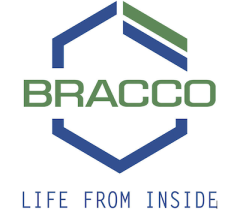
TriHealth in Cincinnati.
The continuing search for advantages to improve workflow has radiology departments constantly searching for new solutions. While some, such as advanced operating systems and computer-aided diagnostics, can require a significant investment in terms of equipment expense or additional training, there is also a simple solution that can help healthcare professionals save steps in the administration of safe and effective care without added complication: prefilled contrast syringes.
Not only do these syringes help streamline computed tomography (CT) procedures, they can simplify supply orders, improve procedural safety, reduce prep time, minimize waste, boost technologist morale and enhance overall patient care.
“I’ve been a CT tech for almost 20 years, and have worked extensively with different power injectors and syringes. To me, it was always very cumbersome and I remember thinking, ‘Why isn’t the contrast already in the syringe?’ And that was how I felt 20 years ago,” remarked Don Owens, director of imaging at TriHealth in Cincinnati.
In Owens’ opinion, switching to prefilled syringes was an opportunity to make an important change to radiology at TriHealth. “We had about 40 techs, and we surveyed them about the injectors we were using at the time. We asked them if they thought the loading of the injectors is safe. Is it efficient? Is it user-friendly? Using an answer scale of strongly agree, agree, undecided, disagree and strongly disagree, we saw a lot of disagrees and undecideds,” Owens reported. “After we converted to prefilled syringes, the responses changed to mostly strongly agrees, with just a couple of agrees. It was a huge tech satisfier,” Owens said. “It completely eliminated this multi-step process where you have to get all these different supplies, and it decreased the time you spent doing that. It gives the technologist more meaningful time with the patient where they’re not fiddling around with taking the lid off a bottle and putting a straw in. After we switched, not a single tech said, ‘Wait, I want to go back to the old way.’”
Owens also observed and recorded the time technologist staff spent on contrast administration, both prior to and while using prefilled syringes. Pre-conversion, the median preparation time was about 90 seconds, but ranged from 60 seconds to 3 minutes, depending on the technologist.
“After we went to the prefilled [syringes], it was 30 seconds. The workflow discrepancy was completely eliminated, and everyone’s workflow was the same,” reported Owens.
With 23 imaging facilities housing 19 CT scanners and 17 MRI scanners, the operation at TriHeath required a complex ordering system and inventory prior to the conversion. Owens felt that managing the inventory required for manually filling the syringes was no longer worth the cost savings. “Our previous injectors each used different syringes, so when we ran out of syringes for an injector, we couldn’t just use our other inventory of syringes. We needed much more space to store things and the sheer number of products and inventory was difficult to manage. After we switched to LF injectors and prefilled syringes, we are seeing syringe compatibility with all the injectors and it’s very easy for just-in-time ordering.”
Efficiency isn’t the only factor in choosing prefilled syringes, as the current medical environment demands the utmost in safety and sterility. Radiology technologists prioritize the patients’ experience and overall health as they work to secure a sterile imaging environment. Using prefilled syringes reduces the risk of contamination and also eliminates the possibility of accidental spills that comes with manually filling syringes.
“There’s a lot of opportunity for risk there,” explained Owens. “Using prefilled syringes, there’s no risk. It’s already in the container, and if you drop it, the plastic container doesn’t typically shatter. I can’t tell you how many of the old glass bottles slipped out of my hands before we switched. The glass shatters and there’s contrast everywhere. Or you pop the lid off, take a plastic straw and put it in the contrast, hook it on the injector and you pull the contrast up. Anything could happen there.
“Using prefilled syringes takes away all the risk that comes with using a multi-dose vial. The idea of using a multi-dose vial is not attractive in the eyes of our Infection Prevention, Joint Commission and Department of Health teams,” he continued. “All sorts of red flags are going off for them. Though there isn’t a formal Joint Commission statement about it, we are always commended by them about using prefilled contrast syringes because there’s less chance of errors.”
Tying overall staff engagement and improved patient satisfaction to prefilled syringes may not be a clear connection, but Owens’ surveys show the impact that prefilled syringes make. All of his users agreed that the prefilled syringes helped them save time and reduce risk. Instead of dedicating their efforts to manually filling syringes, they were able to refocus their energy on patient care.
Owens finished by saying, “We did a survey. They felt it’s a safer practice. They felt it made their work more efficient. They felt it was easier to use. All of those things make your job easier, and so why wouldn’t they be happier?”
Case study supplied by Guerbet.



 December 10, 2025
December 10, 2025 









